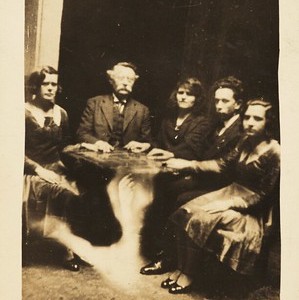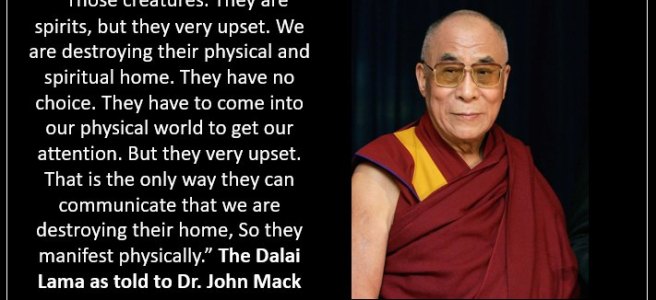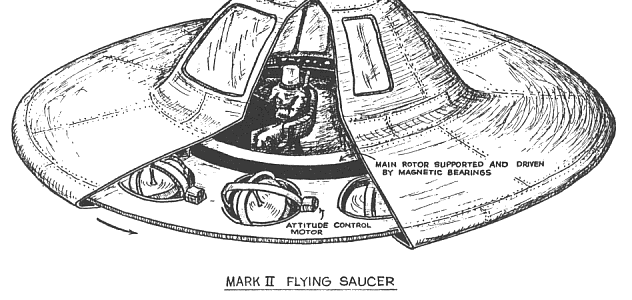Things have been quiet here at the Skunkworks, not because of any decline in research (Bernard Stiegler’s three-volume Techics and Time just arrived, I’ve been chewing over and savouring Matteo Pasquinelli’s revelatory social history of AI The Eye of the Master—essential reading!—, and Gary Lachman’s biography of Madame Blavatsky has served as bed- and leisure time reading…), nor has there been a pause in reflection, but, rather, recent “developments” have been prima facie eye-rollingly silly (e.g., UAP as being demonic…) or demanding more probing scrutiny to disclose their cultural roots, conceptual foundations, and ideological investments; here, I’m thinking of, among other things, Dr. Kimberly S. Engels’ online course on the phenomenology of UAP and the recent Sol Foundation symposium.
Among those books that prompt today’s reflections areYeats and the Occult (ed. George Mills Harper, 1975) and Demetres Tryphonopoulos’ The Celestial Tradition: A Study of Ezra Pound’s The Cantos (1992). In the former it is Kathleen Raine’s “Hades Wrapped in a Cloud” with its discussion of Yeats’ Neoplatonic interests and research into what Evans-Wetz termed “the fairy faith in celtic countries” that reveals the deeper roots of our post-2017, Skinwalker-Ranch-haunted talk around UAP and related matters. And Tryphonopoulos’ exemplary chapter on “The Occult Tradition” in its late Nineteenth-, early Twentieth-Century manifestation could be as much about the present.
A telling case-in-point is Jeffrey Kripal’s talk delivered at the aforementioned Sol Foundation Symposium. Despite his characteristic, conversational, cagey delivery (an endemically American style of academic presentation that warrants a study all its own) one can—charitably—distil a number of positions, if not, strictly speaking, theses. One of these concerns is “what our sciences are and can do and what they aren’t and cannot do.” Kripal’s position seems in line with that resistance to the growing hegemony of the natural sciences in the Nineteenth century, that upsurge in interest in “the occult” in response to the ebbing of religious orthodoxy. As Tryphonopolous writes: “It is an axiom of the occult [as he uses the term] that presently mysterious phenomena may be understood or explained in the future. However, there are other phenomena, said to be intrinsically occult, inherently unknowable to scientific reason, but still accessible to occult modes of cognition…” (25). These unknowable phenomena Kripal tends to term “impossible,” which includes “the physics of mystics,” levitation, bilocation, clairvoyance, and, imaginably, other parapsychological phenomena (which are sometimes reported to accompany UFO or UFO entity encounters), such as telepathy, poltergeist activity, Out-of-Body experiences, and UAP and encounter experiences themselves. Such impossible phenomena Kripal posits mark a limit for at least our present, physicalist (“materialist”) sciences, just as was maintained by those occultists of more than a century ago.
Other statements by Kripal strongly suggest his position is motivated by that desire to preserve a “religious,” “metaphysical” domain of experience and reality, much in line with his Victorian and Edwardian forebears. His argument is a “comparative argument,” grounded in his background as a Religious Studies scholar. He readily conflates our modern UFOs and ufonauts with all those tales of gods, angels, and demons and their interactions with humankind: as he says “This thing has been around as far as we can see back.” Here, Kripal might be said to twine two threads of that earlier iteration of “the occult.” On the one hand, this fusing UAP and related phenomena with the global religious tradition arguably takes up that project to preserve certain religious beliefs (the separability if not immortality of the soul or reincarnation, for example, or the reality of what Kripal and cadre term “Nonhuman Intelligences,” traditionally gods, angels, and demons). On the other, his position might be said to imply (though this is a shakier proposal), in its positing a perennial, global, transhistorical phenomenon, an affirmation of a perennial philosophy, occult knowledge, or gnosis concerning such matters, another characteristic of that “psychic tide” of over a century ago, as set forth most famously perhaps in Helena-Petrovna Blavatsky’s Theosophy (among others), an essential fiction of such movements at least since the translation of the Corpus Hermeticum in the Fifteenth century.
Aside from Kripal’s talk, at least two other examples come to mind. Joshua Cutchin, an “amateur” scholar to be respected, will be giving a course The Near-Death Experience under the auspices of the Kosmos Institute (whose self-description as concerning “mythology, esotericism, archetypes” seems to include it in the kind of discourse here under discussion). The course description suggests it develops matters addressed in Cutchins’ recent Ecology of Souls: A New Mythology of Death and the Paranormal (2022). It is not immaterial that this work references both Yeats and Evans-Wentz, for the former had already formulated a kind of General Theory of Apparitions, drawing from the Neoplatonist Porphyry, identifying Fairies and their ilk and the souls of the dead materialized during séances, both made of “soul stuff,” a manner of “subtle body” (remarked, also, by Kripal), the substance, by extension, of our ufonauts, indeed, of all those “nonhuman intelligences” that present themselves in different forms throughout human history, or so our modern occultists’ story goes. (That is, perhaps we are not dealing with a variety of entities but with one Other that manifests in this variety of ways…). Nor is it any less accidental that Jacques Vallée, too, references Evans-Wentz in his Passport to Magonia (which, too, proposes a deeper root shared by so-called “Nonhuman intelligences” said to interact with human beings) and, though I cannot find the title indexed in any of his published volumes, I swear I’ve read him refer to Lodovico Maria Sinistrari’s De Daemonialitate, et Incubis et Succubis, a volume familiar to those occultists a century or so past, both in North America and England; nor is Vallée’s “Rosicrucianism” unknown (Rosicrucianism an inflection of the occult tradition examined by Tryphonopoulos, which, he reminds us, finds its origins in a Seventeenth century hoax (what today we would term a “psyop”)). Nor should one overlook the influence of Whitley Strieber (a collaborator of Jeffrey Kripal’s) in this regard, a self-confessed adherent of Gurdjieff, another figure in the earlier occult foment discussed by Tryphonopoulos.
Believers in the views put forth by Kripal, Cutchin, Vallée, Strieber and others will likely see the case I make here as a vindication of those views, as if they were the most recent inflection of a perennial, universal story of human interaction with the supernatural. My contention, however, is more critical. For, however “comparative” the studies of Kripal and Cutchin (and Diana Walsh Pasulka…), for example, they strike me, as far as I can determine, remarkably blind to history, or, more precisely, historicity. What I mean is that comparative studies always demand a moment of philological labour and scrutiny sensitive to how temporally- and culturally-distant artefacts can be understood, a sensitivity to the insurmountable difference of the Other (which, at the same time hardly precludes the possibility of what Hans-Georg Gadamer termed “the fusion of horizons”), a case I have often made here. Kripal et al. who maintain “the phenomenon has always been with us” hardly represent an unbroken line of gnosis (as if that claim would not be unproblematic in itself!), but rather, again, articulate an “absolutely modern” response to modernity, the epoch determined by the advent of the natural sciences, enlightenment, and technoscience, which themselves are more profoundly determined by the rise of capitalism, within whose horizon “all that is solid melts into air.” Little surprise, then, that we should witness a repetition (which is always different) of ideas that were themselves a reaction to an earlier iteration of the same circumstances. As things stand, this position that “the phenomenon has always been with us” rests on little more than comparative folklore, mythology, or religion, comparisons that, in turn, rest upon a semiotic and hermeneutic naivety at least.
That being said, I need, at the same time, remark a funnily apropos synchronicity. The morning I would finish this post, I sat down with my breakfast and turned on our television, which, somewhat mysteriously (I couldn’t’ discover the channel that was broadcasting it on the channel guide) was tuned to Cronenberg’s A Dangerous Method, his film about Jung and Freud, precisely the scene linked here:



